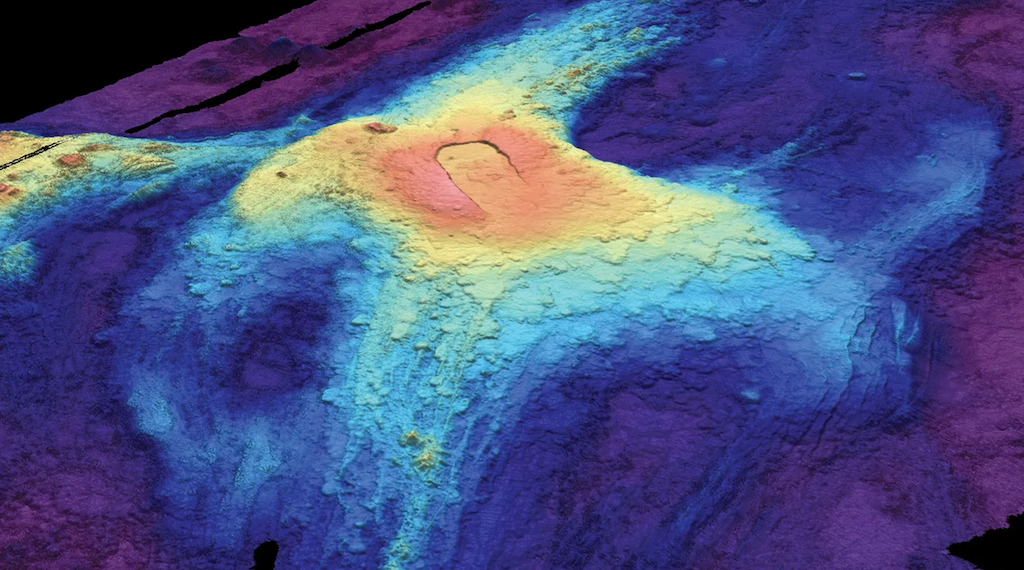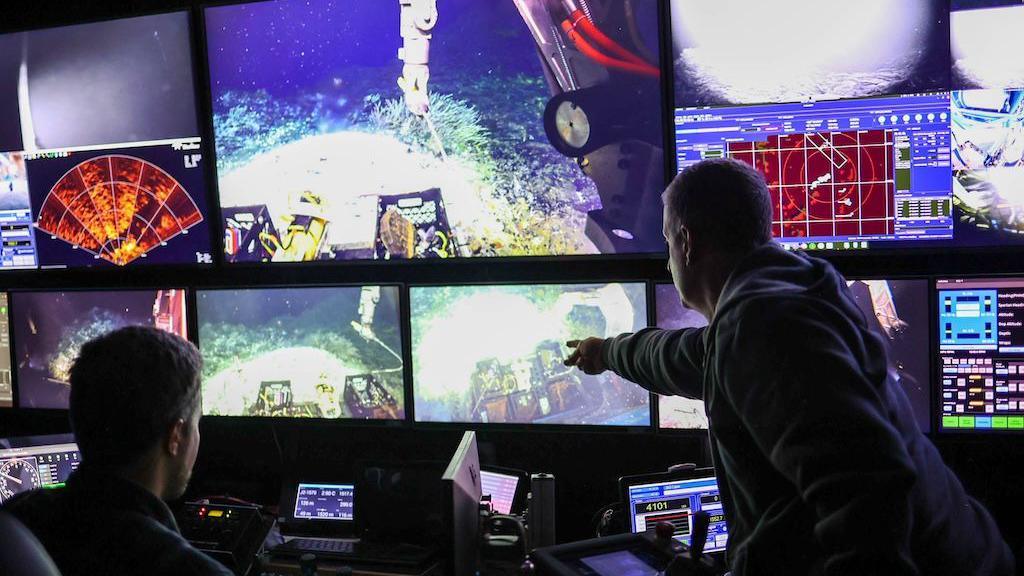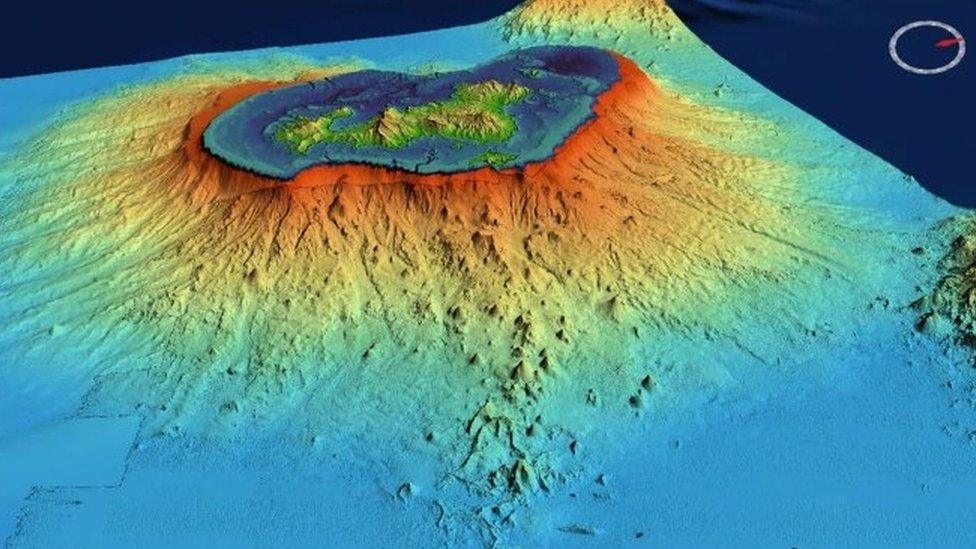The underwater volcano that could erupt this year

A 3D seafloor map from July 2014 shows lava flow from Axial Seamount
- Published
An underwater volcano that can be found around 300-miles off the coast of Oregon in the US could erupt by the end of 2025.
Axial Seamount is the most active submarine volcano in the northeast Pacific.
It's known to have erupted in 1998, 2011, and most recently in 2015.
The good news is, as it's more than a mile beneath the sea's surface, it's not considered dangerous.
More mysterious underwater stories
Everything you need to know about volcanoes
- Published1 May 2024
'Flying spaghetti monsters' and underwater mountain found off the coast of Chile
- Published2 September 2024
Mysterious 'golden egg' found at the bottom of the sea
- Published8 September 2023
Why do experts think Axial Seamount will erupt?

Scientists observing the volcano thanks to an underwater robot
Axial Seamount is closely monitored. It was chosen as the site of the world's first underwater volcano observatory.
Now a constant stream of real time data is provided from the seafloor thanks to advanced equipment.
Sensors show the volcano's activity has been increasing, with hundreds of small earthquakes happening every day.
Bill Chadwick is a volcanologist who has been monitoring the underwater activity.
He wrote in an Oregon State University blog post "An eruption does not seem imminent, but it can't do this forever."
The seafloor near it rises in between eruptions, and is currently at a similar level to when the previous one happened in 2015.
After the eruption, the seafloor level then falls when the lava pours out of the top of the volcano.
What will happen when Axial Seamount erupts?
Watch: Satellite images capture the eruption of the giant Honga-Tonga underwater volcano in 2022, which was so big it reshaped the floor of the Pacific Ocean
Mike Stone, a researcher at Yellowstone Volcano Observatory, told media outlet Cowboy State Daily: "When Axial Seamount erupts, it'll look a lot like a Hawaiian lava flow eruption"
"It's not an explosive eruption, but calm effusions of lava flowing out of the caldera and across the seafloor."
Being able to observe the volcano will help scientists predict when future eruptions could happen around the world.
More amazing underwater news
- Published16 October 2024

- Published3 October 2021

- Published1 December 2020

